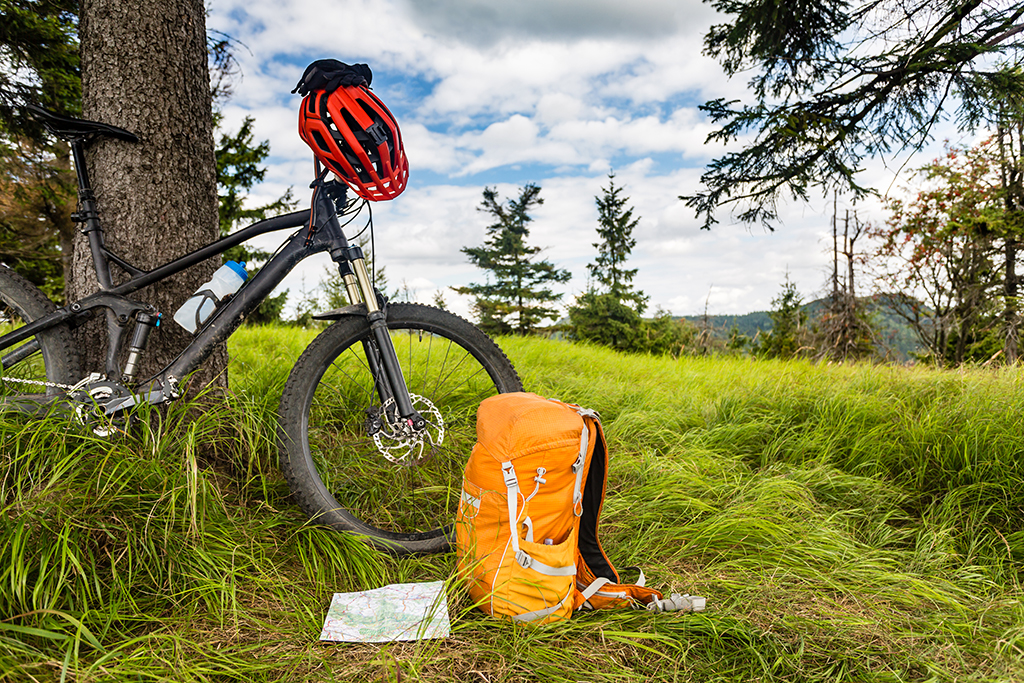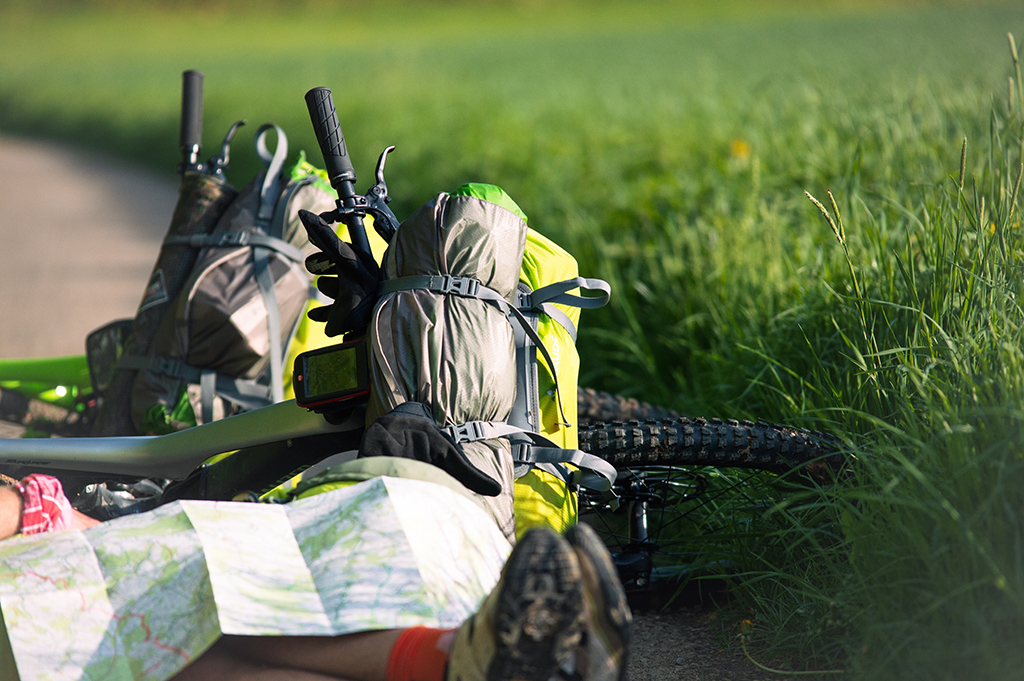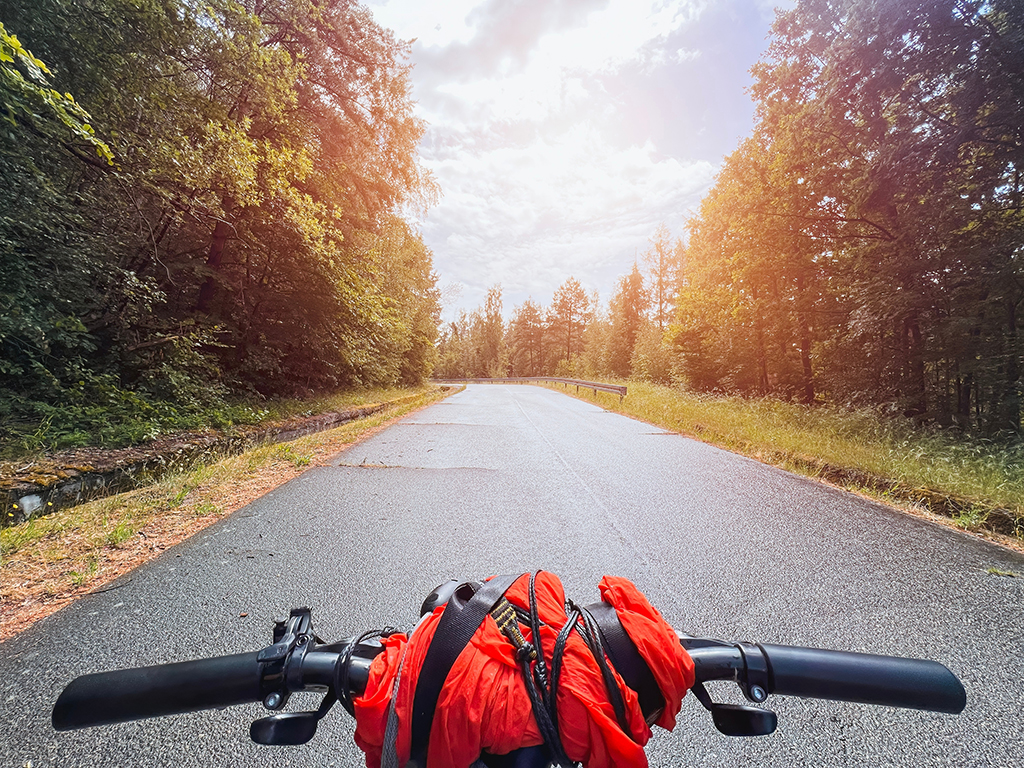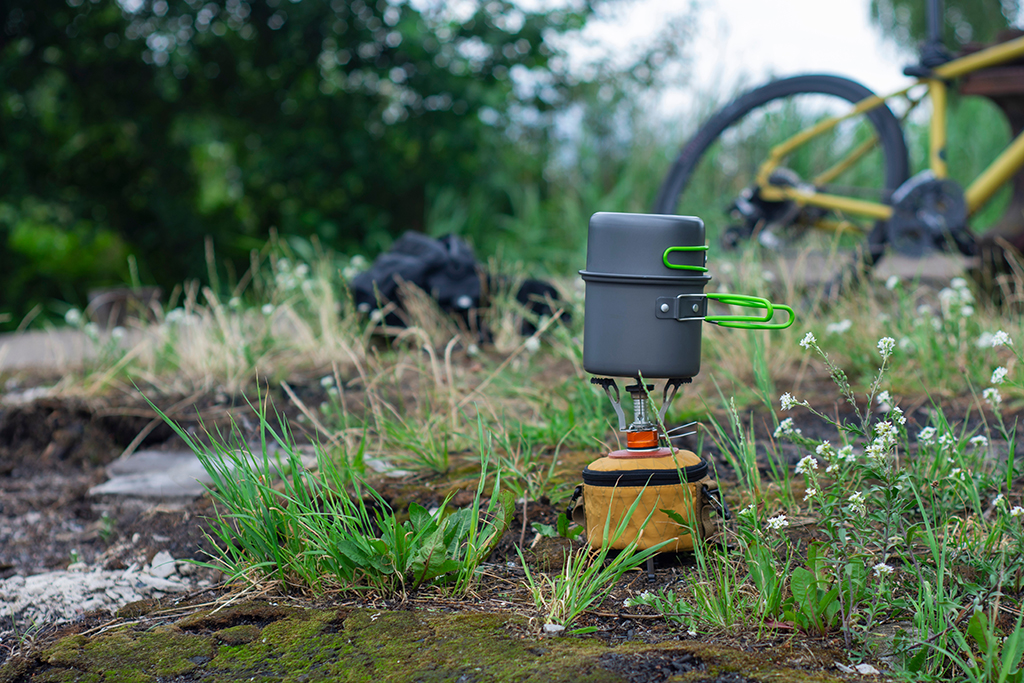
Ask any cyclist what they like about cycling and they’ll probably use words such as ‘freedom’ and ‘adventure’; there’s nothing like that feeling you get when you head off on your bike in the fresh air; just you, your bike, and the open road – the possibilities are endless. It takes us back to our childhood days when we could head off on our bikes for the day with no plan except to be back in time for our mums to call us in for tea.
In a world where many of us are tied down by work schedules and grown-up life, bikepacking has always been a popular way of escaping, but recently it’s become even more widespread, thanks to social media and the greater availability of equipment. But what is it?
We’re going to take a look at what a bikepacking trip is and give you a few tips on how to plan one, including what you need to take and how to choose the right bike.
WHAT IS BIKEPACKING?
The term ‘bikepacking’ is a play on words, mixing up ‘bike touring’ and ‘backpacking’. It usually involves a self-contained trip where you carry everything you need in bags that can be attached to your bike frame, without needing to use a rack or any special equipment.
The emphasis is on travelling light and being self-sufficient; you’ll need to carry all the equipment you’ll need, for example food, clothing etc, on your bike but you’ll have the freedom to go where you want; whether that’s just for one night, or for a few days.
The aim is to take as little as possible; think bivvy bag rather than a big tent or B&B, and just a couple of bags attached to the bike frame, rather than panniers or a rack, so you can really off-road if needed and you aren’t limited to tarmac.

PLANNING YOUR BIKEPACKING TRIP
- Luggage – Rucksacks are fine for a shorter trip but even with the lightest of bags they can still feel heavy on your body, especially if you’re off for a few days. Bikepacking bags can be used on any bike without any special equipment, usually on the seat post, in front of the handlebars and on the main triangle. You don’t need to buy special bikepacking bags, just a waterproof dry bag, strapped to the handlebars with some bungee cord will do.
- Sleep – While you can, of course, stay in a B&B/hostel/bothy on a bikepacking trip, lots of people will tell you that part of the fun of doing it is the freedom of being able to stop where you please, never knowing where you’re going to rest your head that evening. But if you’re doing this you’ll need to factor in the equipment you’ll need; if you’re sleeping wild, the least you’ll need is a small tent or bivvy bag, a sleeping bag and a mat. A tent obviously protects you from the elements, and insects, and offers more shelter for preparing food etc, but a bivvy is lighter, quicker to set up and really does let you sleep under the stars.
- The Basics – A bikepacking trip is a great exercise in stripping down to the bare minimum when it comes to what you really need, but there are a few things that will make your trip a lot more comfortable including a travel size toothpaste and toothbrush, suncream, insect repellent and a fully charged battery pack for your phone/GPS etc.
- Clothing – Of course we all know the saying that there is no such thing as bad weather, just the wrong clothing, and living in the UK we are all familiar with the concept of layering. When you’re out on your bike for hours, warm layers are vital, as is clean, dry kit to change into. It’s obviously wise to check the forecast before your trip but whatever it says, take a waterproof jacket anyway!
- Food – Unless you’re planning your trip around country pubs, which isn’t a bad idea, chances are you’ll need to take some cooking equipment with you. You’ll need a lightweight, compact stove and food that only requires boiled water such as pasta, noodles or dehydrated food.

HOW TO CHOOSE A BIKE FOR BIKEPACKING
Any bike can be a bikepacking bike, part of the beauty of it is you don’t need to splash out on a specific kind, but you do need to choose your route based on the kind of terrain your bike can handle the best. Are you sticking to roads or cycle paths, or will you be off-roading on bridleways and dirt roads? Bear in mind that bikepacking could potentially add up to 10-20kg of extra weight, which will affect how your bike performs on rough terrain and hills.
If you are thinking about what kind of bike to use for a bikepacking trip, here are some things to consider:
- Frame – Any frame material will work for bikepacking, although some are better than others; for example, carbon fibre frames will be lighter – handy if you need to carry your bike up a hill – but this may also affect how much weight you can carry, so check the manufacturers recommendations before your trip. Steel and titanium are good choices too.
- Fit – The best bikepacking bikes tend to favour a more upright position, but you can adapt your bike by raising the height of the handlebars. Bar ends could help by adding more hand positions; wrist/hand/shoulder/neck comfort is important when you’re putting the hours in in the saddle, often on difficult terrain.
- Mount – Frame and fork mounts are pretty common at the moment and will give you more options when loading up your bike, there are also the usual rack and mudguard mounts that are found on most bikes. But if you haven’t got any, don’t worry, the point of bikepacking is that you can strap your bags on without any mounts, maybe even spreading the weight more evenly.
- Gears – The bigger range of gears the better, when it comes to bikepacking; you’re going to need all the help you can get when you’re going up those hills on a loaded bike with legs that feel like jelly.
- Suspension – It might be a good idea to add pressure to your suspension, to make up for the added weight. Even though you’re probably not going to come up against any overly technical terrain on a bikepacking trip, a bit of suspension is good. It’s a good idea to have a test run at some point before your trip, with your bike fully loaded.
- Saddles – The right saddle choice is crucial; you’re putting in a lot of saddle hours on a bikepacking trip and the last thing you want is saddle sores. The right saddle is a personal thing, but it’s worth remembering that the saddle that feels right for you on your usual bike might not work when you’re bikepacking, once you factor in the extra weight you might be carrying in the form of a rucksack etc, as well as the longer hours in the saddle.
- Tyres – The tyres you choose depend on the type of bike, as well as the terrain, but you’ll need something durable and resistant to punctures. Tubeless tyres are ideal for this kind of trip, partly because you can have a slightly lower trye pressure without the risk of punctures.
As with any cycle trip, it’s important to have the right tools/spares with you, especially as you could be cycling in some pretty remote areas; for example, puncture repair kits, pump, multi-tool etc. You’ll also need a bike lock.

Bikepacking lets you get back to the bare bones of cycling; the freedom of being able to head off on the open road without any constraints, with everything you need right there on your bike. Throw in some wild camping, a bit of peace and quiet and some amazing scenery and it’s not hard to see why bikepacking has really grown in popularity.
If you’re not quite ready to head off solo into the unknown, why not have a look at our suggestions for finding a cycle route near you on our blog, or while you’re there you could check out some of the most treacherous bike trails in the world (although we wouldn’t recommend trying any of these on your next bikepacking trip…).
Whatever kind of trip you decide on, you might want to consider bicycle insurance. Preparation is key, for any trip you plan, but even with all the preparation in the world, accidents can still happen. Our years of experience in cycle insurance mean that we’ve been able to put together a package of standard benefits to suit all kinds of cyclists. Take a look at our website to see how our policies can help you, both in and out of the saddle.
All content provided on this blog is for informational purposes only. We make no representations as to the accuracy or completeness of any information on this site or found by following any link on this site. We will not be liable for any errors or omissions in this information nor for the availability of this information. We will not be liable for any loss, injury, or damage arising from the display or use of this information. This policy is subject to change at any time.
We offer a variety of cover levels, so please check the policy cover suits your needs before purchasing. For your protection, please ensure you read the Insurance Product Information Document (IPID) and policy wording, for information on policy exclusions and limitations.


